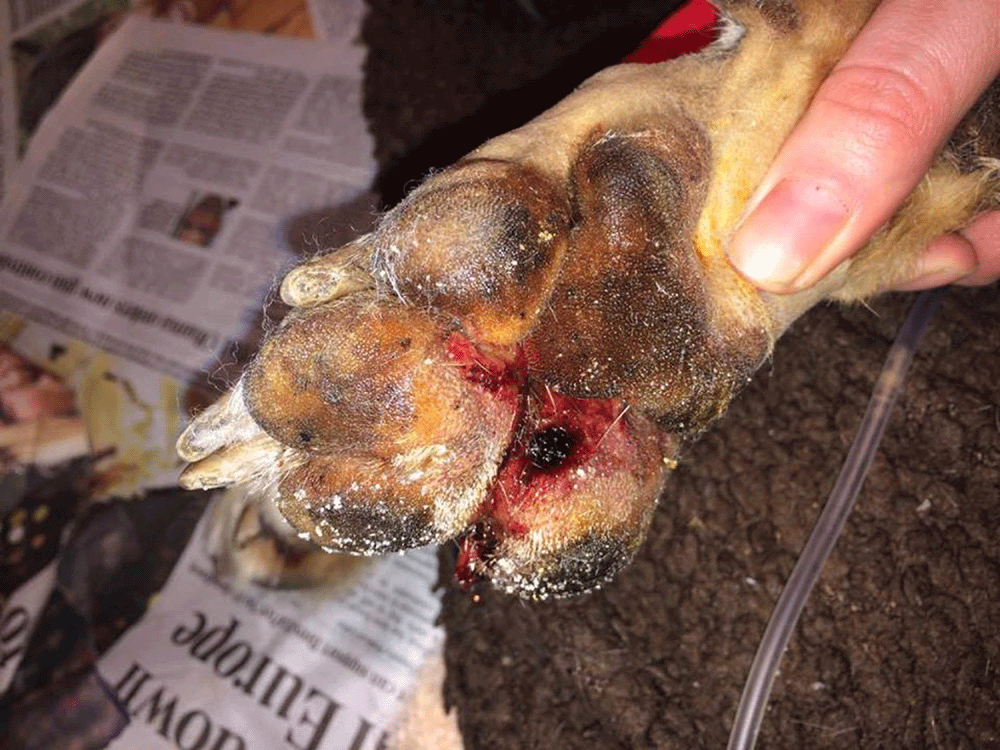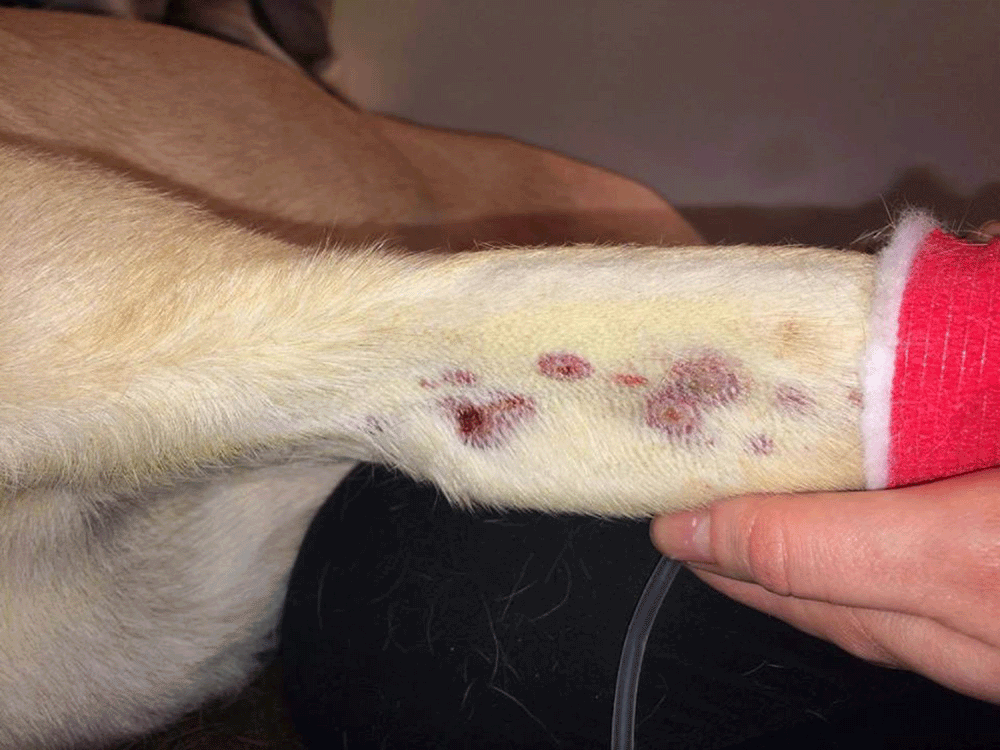VETS have confirmed the first Scottish cases of a deadly disease that rots the flesh of dogs.
Three pets have been infected north of the border in the past year, at least one of which died.
Alabama rot, which is picked up on dog’s paws and legs during muddy walks, originates from America but was discovered in Britain around three years ago.
The killer condition causes tiny clots in blood vessels, which can lead to ulcers on the skin and eventually kidney failure.

There have been at least 61 confirmed cases of Alabama rot – also known as CRGV – in England, resulting in dozens of dogs being killed or put down.
Now the disease has spread north of the border and vets are urging dog owners to “be vigilant”.
An online blog, posted by the University of Edinburgh’s Royal (Dick) School of Veterinary Studies states that there have been three confirmed cases in Scotland in the last 12 months.
It reads: “All the dogs came from different places, and there is no association with any one site.
“There is no reason to believe that owners should avoid walking their dogs in any particular area.
“The number of cases is still very low but we would advise dog owners and veterinary surgeons to be aware of the condition and be vigilant.”

It continues: “The initial lesions include inflammation, reddening, sores, swelling, bruising and ulcers. These usually affect the feet and lower limbs, but can be seen around the face and in the mouth.
“Alabama rot can lead to acute kidney injury (AKI) causing kidney failure within ten days of the initial skin wounds.
“Dogs with suspected AKI should be taken to a vet as soon as possible, as they require urgent specialist care.”
A veterinary practice in Midlothian confirmed the first confirmed fatal case of Alabama rot in Scotland.
ICR vets said: “We can confirm that we treated a case of Alabama rot at the start of March. The disease is almost always fatal and our case sadly did not make it.
“We are not advising any areas to avoid in Midlothian as we don’t know where the disease has come from – but the best advice is to wash and dry dogs’ feet after walks, and to be vigilant checking your dogs for new skin lesions.”
The cause of Alabama rot is currently unknown, meaning there is nothing that can be done to prevent it.
However most cases are recorded between November and May, suggesting that cold, wet weather may play a role.
The prognosis for animals who are treated before kidney failure is good, and most dogs will make a full recovery if their wounds are tended to.
However, most dogs with kidney failure succumb despite treatment.
Dr Tim Nuttall, head of dermatology at the University of Edinburgh’s Dick Vets, said: “Our advice to owners is not to panic but be vigilant.
“If you spot anything of concern, take your dog to a vet as soon as possible.”
The disease was first identified in America in the 1980s when it appeared to only affect greyhounds.
But now it seems to strike dogs irrespective of breed or age.
